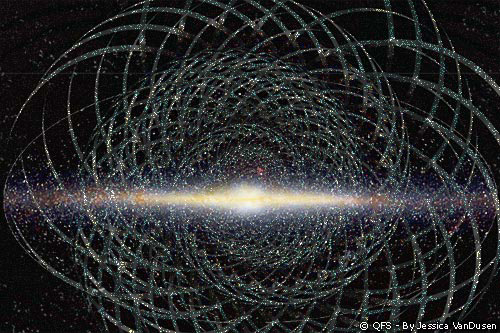Part of the Casswiki article series Cassiopaean Experiment and Natural science
The Cassiopaean channeled material speaks of a comet cluster entering the inner solar system with a period of approximately 3600 years. This comet cluster is periodically, albeit at very long intervals, replenished by the passage of a dark star through the Oort cloud, a field of frozen debris at the outer fringes of the solar system, about one light year away from the Sun.
The model of comets on a very elongated elliptic orbit would fit with the periodicity of impact events that can be inferred from the ice cores. Global extinction events appear to be triggered at substantially longer intervals, from 26 million years upwards. This would be consistent with each passage of the dark star precipitating a heavy cometary shower on the inner solar system, which then would get rapidly exhausted by impacting planets, losing mass to evaporation near the Sun and such causes. The remnant would then continue cycling at a 3600 year orbit, getting progressively thinner on each round.
The distribution of cometary orbits shows, under statistical analysis clustering which could be accounted for by a dark companion of the Sun, orbiting the Sun with an orbital period of about 27 million years. See nemesis theory – many resources are also to be found around the Internet. The subject is also extensively discussed and sourced in The Secret History of the World.
According to the Cassiopaean material, the next entry of the comet cluster into the inner solar system will closely coincide with the Wave – and since 2005 the number of fireballs, according to observations gathered by the American Meteor Society, have increased exponentially.

There is geological evidence for periodic cataclysmic impact events on Earth. Greenland ice cores show an increase in atmospheric dust with a period of approximately 3600 years. This could be attributed to periodic asteroid or comet impact events.
